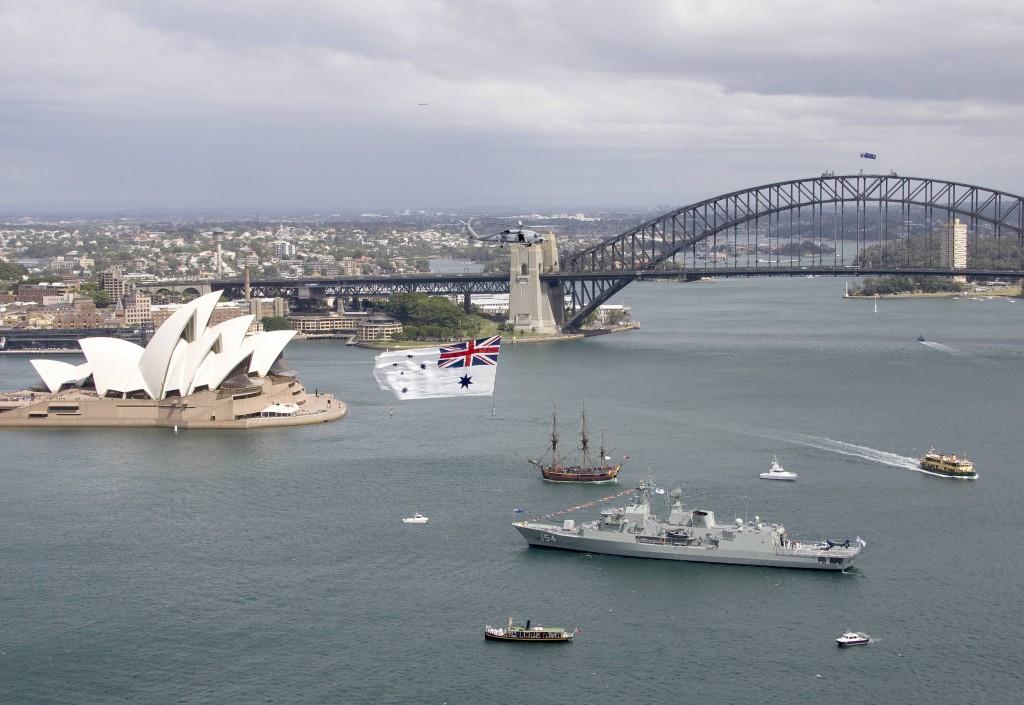Challenges for Mr Rudd’s northern naval posture
Posted By Andrew Davies on August 27, 2013 @ 16:25
 [1]In a speech at the Lowy Institute [2], the Prime Minister today announced that a re-elected government will
[1]In a speech at the Lowy Institute [2], the Prime Minister today announced that a re-elected government will
… establish the Future Navy Taskforce that will provide advice to the Government on implementing these recommendations and other recommendations of the Australian Defence Force Posture Review and 2013 Defence White Paper that offer operational advantages, enhance capability sustainment requirements and relieve future pressure on the current location of Fleet Base East in Sydney.
The Taskforce will provide advice on the timing, proportions and implementation of moving some or all of Fleet Base East to Queensland and Perth and developing, upgrading or expanding Darwin and Broome.
At first glance, the argument that Australia’s navy would be better placed to respond to events in the waters to our north—where all of the strategic action is taking place—is reasonable. All other things being equal, forces close to an area of operations will be able to respond more quickly than those further away. Similarly, forward basing can make it easier to sustain operations, and units can familiarise themselves with prospective operating areas through exercising and training in like environments. These considerations underpinned the relocation of ADF units to the north of Australia in the 1980s and 1990s.
For small vessels such as patrol boats, being located close to likely operating areas is particularly important—they need to be nearby to respond quickly to rapidly evolving events such as border protection and search and rescue operations. Their limited range and endurance means they can’t operate effectively from distant ports. But for major naval vessels, the logic is less compelling. They can remain at sea for months if required, and the loss of less than a day steaming from southern ports makes essentially no difference to their ability to remain on station for extended periods. The navy has maintained a continuous frigate presence in the Persian Gulf and off the Horn of Africa for over a decade, so doing the same to the north of Australia would be relatively easy.
It’s also worth understanding why the navy is where it is today. Geography plays a role in determining the suitability of locations for military basing. For example, large ships require deep water access and port facilities that are available at all times. For berthing purposes the local tidal range is an important factor. The two current major fleet bases are—not coincidentally—located in ports with small tidal ranges; Fremantle (under 1m) and Sydney (about 2m). In comparison, the northwest coastline experiences some of the largest tidal ranges in the world; Derby has a mean spring range of over 10m and Broome about 8.5m.
The unavoidable conclusion of these considerations is that there’s no compelling strategic logic to move navy’s major vessels further north than Brisbane. One reason to look at Brisbane is the potential crowding that could result in the existing bases in Fremantle and, especially, Sydney Harbour when two large new amphibious ships and three air warfare destroyers are delivered. It could get pretty tight.
With that in mind, the 2012 Australian Defence Force Posture Review [3] identified the need for a rethink of navy’s basing:
Navy faces the greatest challenges in accommodating changes required by Force 2030 and needs a fresh master plan for its future basing to meet significantly greater demands on the capacity of wharves, dockyards and support facilities at Navy’s bases.
But it went on to recommend the potential northern relocation of only select future force elements—the future submarines and amphibious ships:
Defence should commence planning now on long term options for establishing a supplementary east coast fleet base at Brisbane for the Future Submarine and large amphibious ships.
Seen this way Brisbane becomes an ‘overflow’ facility for the east coast fleet.
And there’s another good reason to not move the bulk of the fleet from its current location—it’s prohibitively expensive to do so. When the move of Fleet Base East from Sydney to Jervis Bay was contemplated in the mid-1980s, the estimated cost was over $2 billion (2011 prices). Moving to a northern harbour less suited to operating large vessels would cost up to three times that and, at a time when the defence budget is under pressure on all fronts, it’s not likely to be a high priority on Russell Hill. Here’s how the 2013 defence white paper describes the notion:
The Government has decided not to proceed at this time with long-term planning for establishing a supplementary east coast fleet base in Brisbane (which had been recommended by the Review). The significant preliminary cost estimate (in the order of $6 billion), challenges associated with land acquisition, environmental considerations, the need for extensive dredging and the wider dispersion to a third fleet base of Royal Australian Navy personnel and training, all suggest that establishing a fleet base in Brisbane would be challenging and require significant continued investment for it to remain sustainable.
It’s hard to avoid the conclusion that the Taskforce announced today will come up with a similar answer to its predecessors over the past few decades—the strategic logic and business case for a significant move aren’t there.
Andrew Davies is a senior analyst for defence capability at ASPI and executive editor of The Strategist. Image courtesy of Department of Defence [4].
This article draws in part on the ASPI publication Who goes where? Positioning the ADF for the Asia-Pacific century [5], by Andrew Davies and Mark Thomson.
Article printed from The Strategist: https://aspistrategist.ru
URL to article: /challenges-for-mr-rudds-northern-naval-posture/
URLs in this post:
[1] Image: https://aspistrategist.ru/wp-content/uploads/2013/08/20121022ran8109938_143.jpg
[2] speech at the Lowy Institute: http://www.kevinrudd.org.au/latest2_270813
[3] Australian Defence Force Posture Review: http://www.defence.gov.au/oscdf/adf-posture-review/docs/final/default.htm
[4] Department of Defence: http://images.defence.gov.au/fotoweb/Preview.fwx?&position=392&archiveType=ImageFolder&archiveId=5003&albumId=5003&sorting=ModifiedTimeAsc&search=fleet%20review&fileId=8590496097A739A256310C7D03801DA68D63C262324DFB8ED7F17CB3E297E30BF90A747715E33C61629B8355D938FC32176D61D67003E0DA4FEF86433E5232B2D154420E0B08EA0A1A7201113BDF34969C9CD2B2EBD16DF3F92BE1DDB738C84696A6190EE73AA855CB9315770831C51FB3DF0CB48905597FF1FDAED3CB19B1A6EA4E4F3B43629416F42A2E1FE884F8A6EF02F241E5E33E183EC17A1D20C5A51223F2704783EF7521FF12894C5DE15701865246E82A68DDDAE46068DB4D54787D993A7123A713EE4A
[5] Who goes where? Positioning the ADF for the Asia-Pacific century: http://www.aspistrategist.ru/publications/publication_details.aspx?ContentID=311
Click here to print.